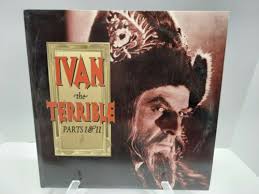Ivan the Terrible, Parts 1 and 2 (1944 and 1945 [1958])
IMDb meta-data for Part I is runtime of 1 hour and 35 minutes, 7.7 rated by 10,000 cinematizens.
For Part II runtime is 1 hour and 28 minutes, rated 7.8 by 7,400 cinematizens.
Genre: Historical fiction.
Verdict: Compelling.
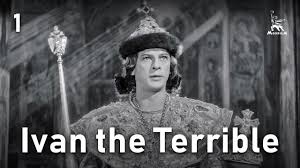
Ivan (1530-1584) came to the throne amid a court of murderous schemers, the envy of the Republican Party in their depravity, but the hypocrisy of church and state combine in an elaborate coronation. In his acceptance speech Ivan alienates just about everyone by claiming he is Tsar of Russia not just Duke of Muscovy. Period! Everyone else is a vassal, rich or poor. Further, he declares his warlike ambitions against any and everyone. Is this Vladdie’s favourite movie now? It was Stalin’s.
This is a matinee idol Ivan, not the pockmarked, volatile reality. He is honest. He is noble. He is smart. He is, well, a right pain for being holier than all the thous.
Around him everyone is a lowlife schemer, because ‘Why should he be Tsar, and not me?’ Truth to tell he is the first Tsar, created out of the ambition of his regents. The plots thicken.
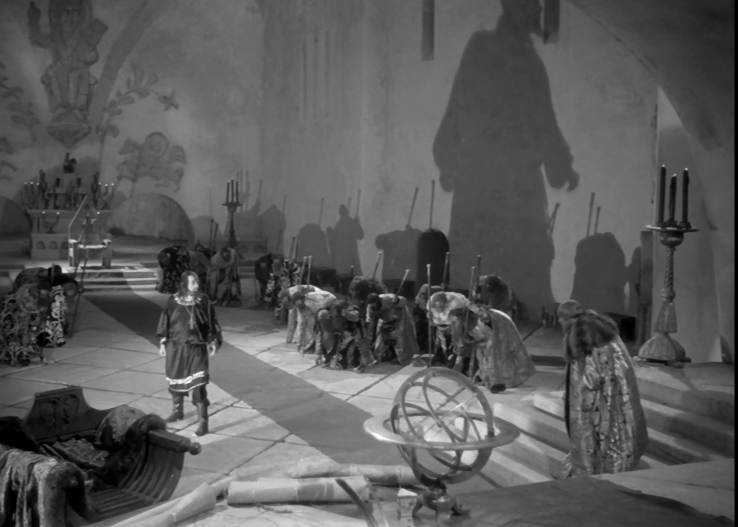
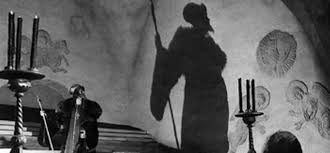
The acting and camera work are throwbacks to silent movies, with tight close-ups, exaggerated gestures, bug-eyed stares, shadows that menace, amid the pomp and riches of the Kremlin. Roger Ebert slams it for this and much else. Indeed no nit was too small for him to pick at it from the size of the doorways to the bejewelled garments. Be that as it may, the whole works.
Of course, Ivan the Formidable was paranoid and unstable to begin with and got more so with age. He purged the ranks of the boyars (nobles) more than once, while Stalin took notes, and made war on the Kazan (for the stans), Astrakhan (to get those hats), Tatars (for the sauce – oops), Lithuania (for those dumplings), Latvia (for the herring), Poland (for the kransky), Ukraine (for fun), and anyone else handy. The Turks felt left out and soon he put that right with another war. He also went looking for enemies in Siberia, and found them. He was a devout Christian, clutching a cross, as he went about murdering far and wide. Amen.
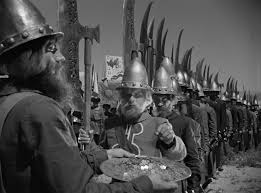
To make war more effectively he modernised the realm with codes of law (taxes and conscription), personal oaths of loyalty, pay for the army, reduced first the powers of the boyars and then their number, started printing Bibles to reduce the monopoly of priests. He also confiscated church property to pay for his wars, claiming priests were disloyal. Henry VIII had the same idea.
He faked an abdication and installed a figurehead to draw out his enemies into a trap. This cinematographic Ivan has a common touch and is much loved by the toiling masses. Hint, hint, just like Comrade Number One.
The film is epic in scale in every way. It is hard to believe that with its cast of thousands it was made during the Great Patriotic War aka World War II when the Nazis were within reach of Moscow, while the Soviet Union was rearming and making a new nine million-man army. While stylised in black-and-white there is a short scene in colour (made on film captured from a German photographic unit) that surprises the viewers, as director Sergei Eisenstein intended it to do.
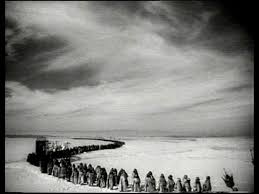
A few tidbits were illuminating. When going into battle the Russian soldiers each put a coin in a bucket, as above. After the battle each survivor takes one out. The residue indicate the casualties. Simple and effective book keeping.
I saw these two at Tuesday film night in graduate school and was awed by them. Then the other day they appeared on You Tube in restored versions no doubt in much better condition that the prints I saw those years ago. So I had a look.

